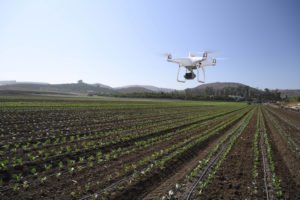On Friday, the U.S. Office of Information and Regulatory Affairs (OIRA) concluded their regulatory review and approved the FAA proposal on Remote ID for drones. The long-awaited rule will lead to a means by which drones can be identified and connected with their operator. This is an important step – much like a license plate and registration is for a car – in allowing enforcement agencies to ensure that regulations are followed. It’s widely considered a foundation for Unmanned Traffic Management, which would allow for the full integration of commercial drones into the airspace. While delayed several times, the notice of proposed rule-making (NPRM)has been promised for December.
Lisa Ellman, Executive Director of the Commercial Drone Alliance, partner at international law firm Hogan Lovells and a major contributor to the discussion on Remote ID for drones since the beginning, provided us with some of her views on the need for Remote ID and the FAA’s proposal.
“Expedited consideration of a remote ID proposal is not just desirable, but imperative. To promote innovation and sustain US leadership in aviation, we need a virtual drone license plate requirement that ensures basic rules of the road,” says Ellman. “The commercial drone industry has been eagerly awaiting a Remote ID rule for several years now. We have long been advocating for a simple, adaptable, scalable, and enforceable solution that promotes compliance and accountability within the industry, allowing it to continue to grow and better help people and businesses across the U.S.”
While the industry and operators have expressed frustration with the many delays on a final decision about Remote ID, Ellman says that a thoughtful approach was necessary to ensure fairness and protect all stakeholders. “There are many considerations that must go into a Remote ID rule, which is part of the reason it has taken so long to adopt. Among the many factors that must be considered include implementation of tiered compliance requirements for UAS systems of varying complexity and scale, balancing compliance responsibility between operators and manufacturers, and ensuring proper data privacy requirements are met. We hope the FAA will address all of these issues in their proposed rule.”
“Remote ID will enable the use of drones to the fullest extent of their capabilities in a safe, efficient, and well-regulated environment. I look forward to reviewing the rule when it is released,” Ellman says.
Miriam McNabb is the Editor-in-Chief of DRONELIFE and CEO of JobForDrones, a professional drone services marketplace, and a fascinated observer of the emerging drone industry and the regulatory environment for drones. Miriam has a degree from the University of Chicago and over 20 years of experience in high tech sales and marketing for new technologies.
Email Miriam
TWITTER:@spaldingbarker
Subscribe to DroneLife here.
https://dronelife.com/2019/12/23/remote-id-for-drones-and-the-next-step-to-utm-drone-industry-expert-lisa-ellman-weighs-in/
